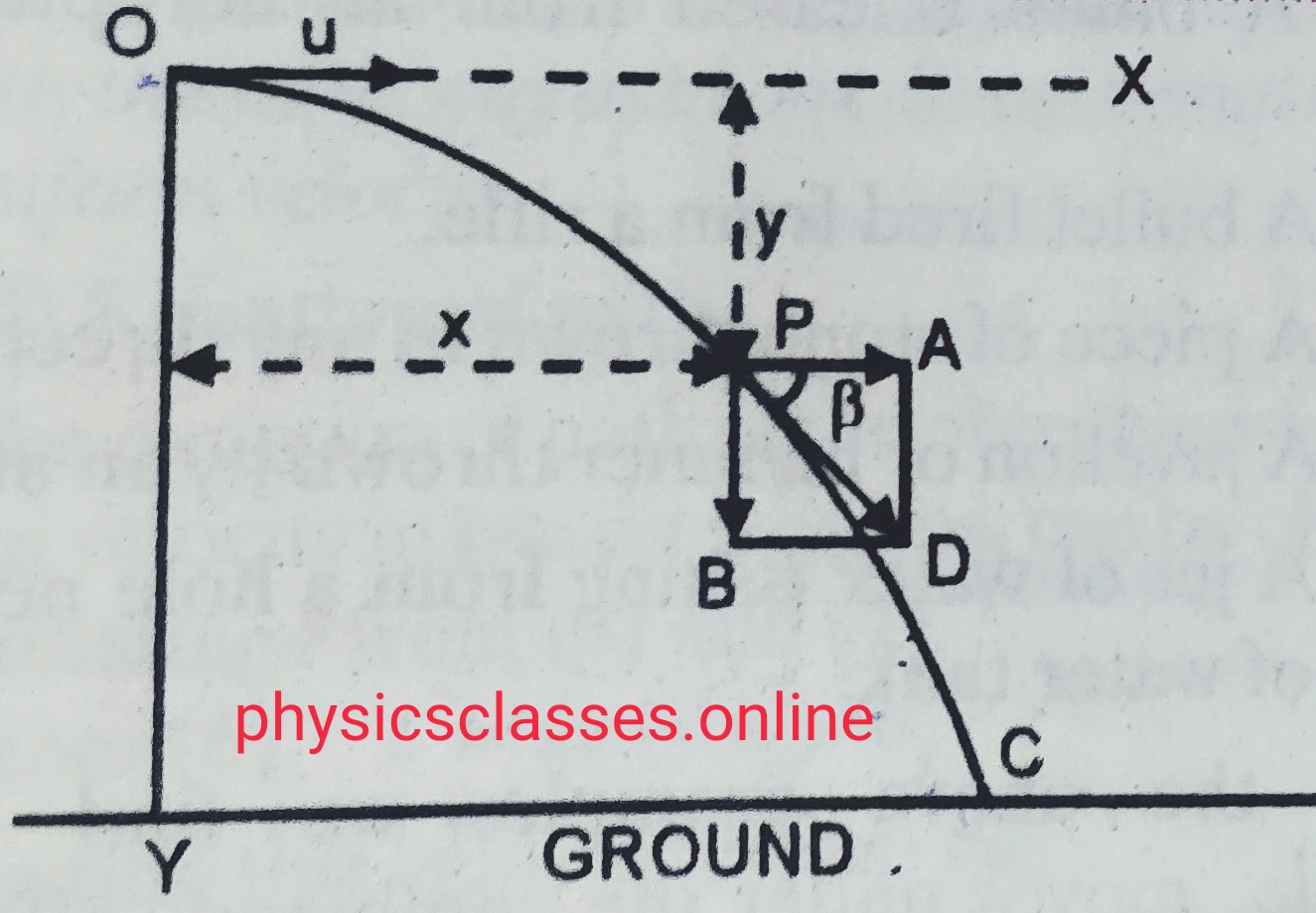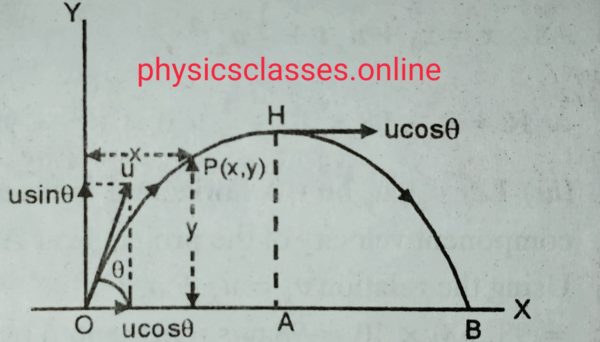Projectile motion
Projectile given horizontal projection and projectile given angular projection
In this topic we will discuss about projectile given horizontal and projectile given angular projection. And we will derive the expressions for equation of trajectory, time of flight , vertical height , horizontal range and velocity of projectile at any time .
Projectile motion-
When a body has given some initial velocity , and body allowed to move in two dimensional motion under the action of gravitational force only ( i.e. there is no any external force acting on the body ) such kind of motion of the body is called projectile motion .
- Important things to know about the projectile motion- projectile moves with constant horizontal velocity, there are no any external force it means there is no acceleration or retardation in horizontal motion.
- The vertical velocity changes with time i.e. increases or decreases when moves downward or upward direction respectively under the gravitational acceleration.
- There is no air resistance ( practically it is not possible in earth surrounding , but considered)
- The magnitude of acceleration due to gravity remain constant at every point it doesn’t changes even at height or depth.
- Projectile given horizontal projection-
-

HORIZONTAL PROJECTION
Suppose OX a horizontal line is parallel to the ground and oy is vertical height. A body is projected with velocity u in horizontal direction ,
so, ux = u and uy = o
Let t is the time taken by the body to reach from initial point O to final point C ( as shown in fig. ) then , horizontal distance X = ux x t = u x t
so t= x /u
Again for vertical motion Y = uyt + ½ gt2 = 0 + ½ gt2
y = ½ g (X/u)2
or , Y = ½ g X2/u2……………………..(i) This the equation of trajectory which is equation of parabola , then we can say path followed the projectile is parabolic .
Time of flight (T) – It is the time taken by the projectile to reach from initial to final position , let T is the time of flight and H is the height ,
Then, from equation of motion Y = uy + ½ gT2
( but uy =0)
so, Y= ½ g T2
or , T = √2H/g ………………(ii)
Horizontal range (R) – It is the horizontal distance covered by the projectile during its flight . Since there is no acceleration in horizontal direction.
So , distance = speed x time
X = R = u x T = u √2H/g .
Velocity of the projectile at any time ‘t’ – As shown in fig. at point p , there are are two components of the velocity , vx and vy along horizontal and vertical direction respectively , then , v = √(vx)2 + (vy)2
Or , v = √ u2 +(gt)2 ( since , vx = u and vy = gt )
Let v makes an angle β with the horizontal then , tanβ = vy/vx
Or , tanβ = gt/u .
Or , β = tan-1(gt/u) with the horizontal.
TO SEE THE VIDEO ON PROJECTILE GIVEN HORIZONTAL PROJECTION CLICK HERE-
Projectile given angular projection-

Suppose a projectile is projected at an angle θ with horizontal , and velocity given to the projectile is ‘u’ . OX and OY are the horizontal and vertical axis respectively . Then the component of velocity along OX and OY are respectively u cosθ and u sinθ .
Equation of trajectory- let ‘t’ is the time taken by the projectile to reach from point O to point B as shown in fig.
Then horizontal distance X = u cosθ x t ,
Or, t=x/ucosθ
But for vertical motion , y= uyt + ½ g t2
Putting the value of time in the above equation we get ,
Y = usinθ .( x/ucosθ) + ½ g ( x2/ u2 cos2θ) .
Or , y= x tanθ + ½ g (x2/u2 cos2θ) …………………….this is the equation of trajectory , which is parabolic . Hence we can say path followed by the projectile is parabolic .
Time of flight (T) – It is the total time taken by the projectile to reach from initial position to the final position . Total time of flight ( T) = ta ( time of ascent) + td (time of descent ) .
[ Time of ascent is the time taken by the projectile to reach to max. height by the projectile. And time of descent is the time taken by the projectile to reach from highest position to the point on the ground .]
As we know , for ascending motion , v = uy – gta
But at highest point v=0 , so , 0= u sinθ – g ta
g ta = u sinθ
ta = u sinθ/g ;
Hence, Time of flight , T = 2 ta = 2u sinθ/g ……………eq.
maximum height(H) – It is the maximum vertical height attained by the projectile above the point of projection during its flight .
from 3rd equation of motion v2 -u2 =2as ;
0 – u2sin2θ = – 2gH
H = u2sin2θ/2g ……………………eq.
Horizontal range(H) – It is the displacement of the projectile between point of projection and point of hitting the ground .
Since there is no acceleration in horizontal direction and hence
X= R = u cosθ x T = u cosθ . 2u sinθ/g = u2 2sinθ cosθ/g = u2 sin2θ /g ;
Range R = u2 sin2θ /g ………………eq.
TO SEE THE COMPLETE VIDEO ON PROJECTILE GIVEN HORIZONTAL PROJECTION CLICK HERE-
Velocity of projectile at any time –

At ant time the velocity has two components vx (velocity along x- axis) and vy (velocity along y-axis ). So at any time velocity v= √vx2 + vy2
v = √ [u2 cos2 θ + (u sinθ – gt)2 ].
Or , v = √ (u2 + g2t2-2ugt sinθ ).
Let β be the angle of resultant velocity with horizontal direction then ,
Tanβ = (u sinθ-gt) / (ucosθ)
[ ***** note- question based on the projectile may be asked to find the all equations but angle of projection is θ with the vertical instead of horizontal in that case , at the place of sinθ take cosθ and vice-versa .*******]
Service Unavailable
The server is temporarily unable to service your request due to maintenance downtime or capacity problems. Please try again later.
Additionally, a 503 Service Unavailable error was encountered while trying to use an ErrorDocument to handle the request.
